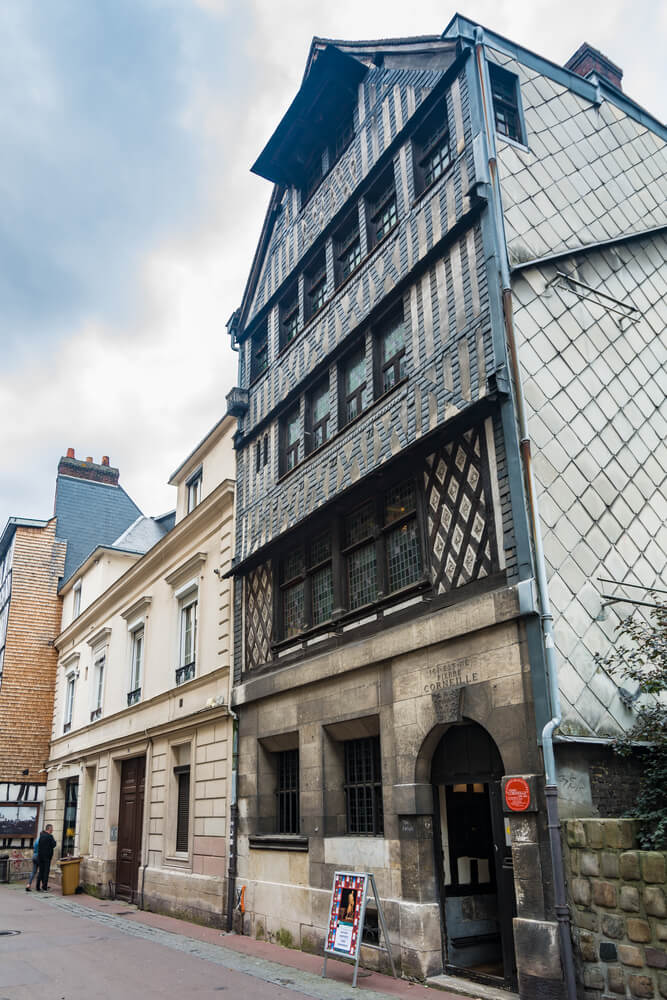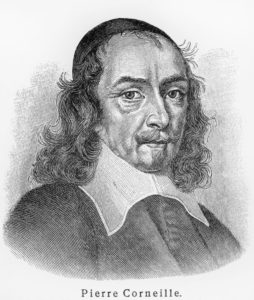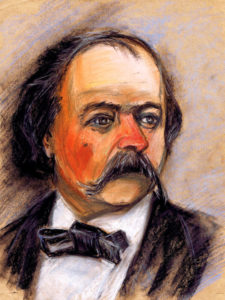Discovering the houses of Corneille and Flaubert in Rouen
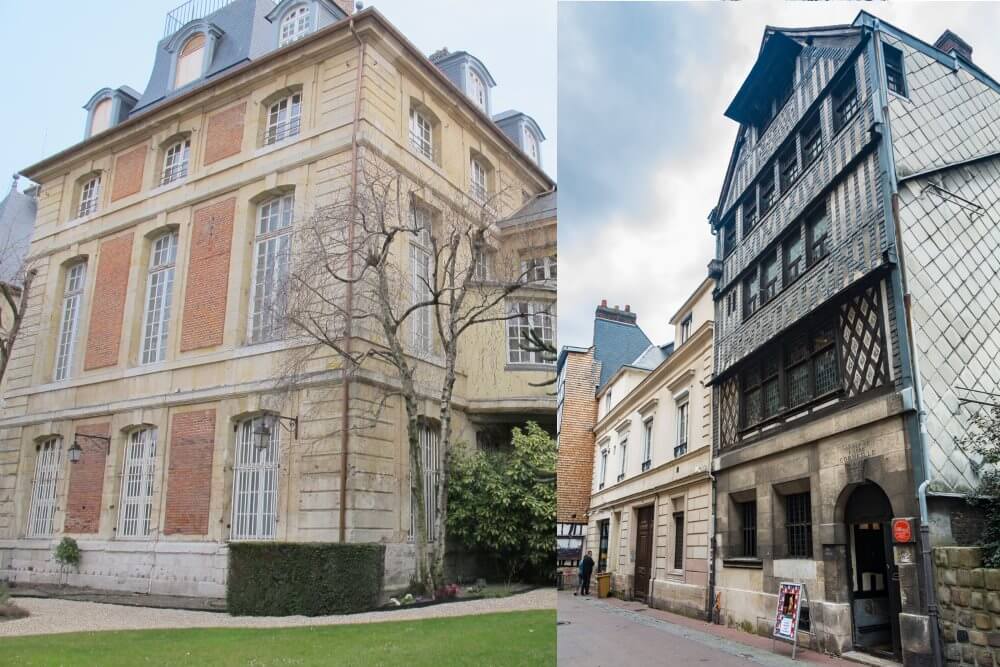
The birthplaces of Pierre Corneille and Gustave Flaubert have been part of Rouen’s museums since 2021, to create a “literary centre”.
These 3 houses are linked to these 2 French writers and have now been awarded the “maisons littéraires et musées de France” label. It’s a way of highlighting a heritage that is all too often overlooked, but which is well worth discovering when you’re in Rouen.
Is Normandy a land of literature? That’s what you’ll find out when you visit these interesting museums.
Pierre Corneille’s birthplace
The playwright was born here on 6 June 1606, and it was here that he wrote Le Cid.
Even if you haven’t read any of Corneille’s works, you may one day have had to make a Cornelian choice… Because yes, this expression, which has become popular, comes from the name of this successful playwright.
Pierre Corneille first worked as a lawyer in the Parliament of Normandy after studying law, and then went on to become a writer. Although a well-known tragedy writer, he began by writing comedies. Corneille’s theatre is far more varied than one might first imagine.
L’Illusion comique, Le Cid, Horace, Cinna, Polyeucte, Le Menteur, Rodogune, Nicomède, Tite et Bérénice and Suréna are among his major works.
What can you see in Pierre Corneille’s birthplace?
You should know that he lived in this house for 6 years, and that it has undergone many different transformations since then.
Inside, you’ll find his writing room, reconstructed using 17th-century furniture, an ebony cabinet that once belonged to him, a vast Cornelian library, a model of the Place du Vieux Marché in the 17th century, articles recounting performances of Corneille’s works, as well as portraits of the author and his brother and of the city of Rouen.
How much does admission cost?
Admission is free. It would be a shame to miss out!
How do I get to Pierre Corneille’s birthplace?
There are several modes of transport available to get you to the museum:
- Metro – Palais de Justice stop
- Téor 4 – Vieux Marché stop
- Bus 8 – Palais de Justice stop, Bus 13 – Gustave Flaubert stop
- Cy’Clic Vieux Marché station
What are the opening times?
The museum is open Monday to Saturday from 9am to 7pm (opening at 10am on Tuesdays).
Sundays and public holidays from 10 a.m. to 1 p.m. and from 2 p.m. to 6 p.m.
The Flaubert and History of Medicine Museum
This museum, in the rue Lecat in Rouen, is the house where Gustave Flaubert spent his childhood while his father worked as a surgeon.
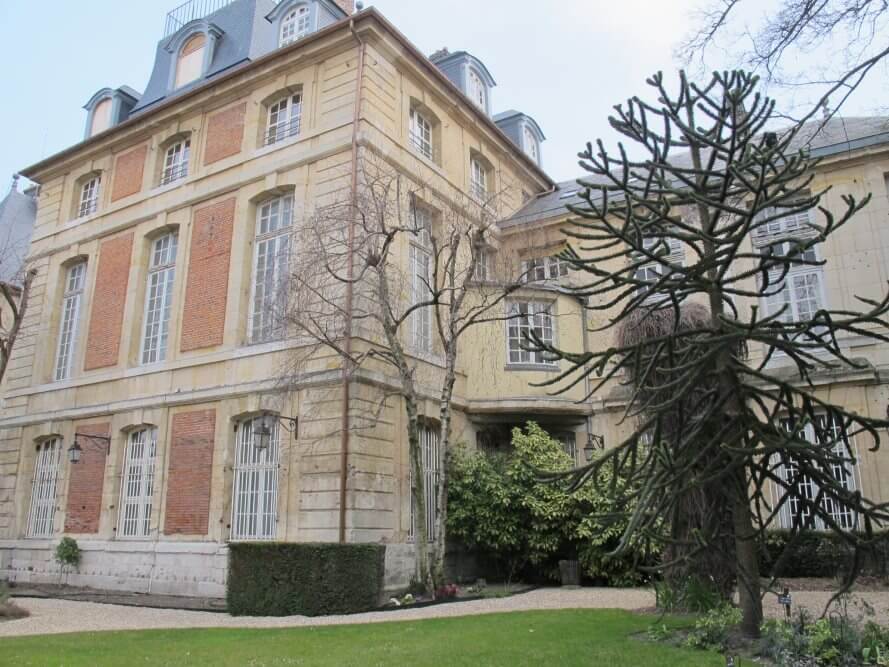
Photo credit: https://www.flickr.com/photos/51366740@N07/8634272414
After studying law, Gustave Flaubert took refuge in writing following an epileptic seizure. He travelled and it was on his return that he wrote Madame Bovary, a masterpiece that took him 5 years to complete.
Salammbô followed, then L’Éducation sentimentale and many others. A perfectionist, he was a hard worker who inspired many writers (Proust, Sartre…), the realist movement and the new novel.
What can you see in the house where Gustave Flaubert was born?
The museum is housed in the Hôtel-Dieu pavilion, where you can discover how medicine was practised from the Middle Ages to the early 20th century, with collections spread over 11 rooms, including a cabinet of curiosities, an apothecary’s, a dental surgery, etc. Incredible objects include a 6-seater hospital bed, an 18th-century delivery dummy and a leech perch.
How much does admission cost?
Admission is free.
How do I get to Gustave Flaubert’s birthplace?
There are several modes of transport available to get you to the museum:
- TEOR 1, 2, 3 – Pasteur-Panorama stop
- TEOR 4 – Vieux-Marché stop
- Cy’Clic Pasteur – Fac de Droit station
- 10 min walk from the station, 5 min from Place du Vieux-Marché.
- Pay parking around the museum.
- Disabled parking nearby.
What are the opening times?
The museum is open on Tuesdays from 10am to 12.30pm and from 2pm to 6pm, and from Wednesday to Saturday from 2pm to 6pm. Groups welcome in the morning by prior arrangement only.
The Flaubert pavilion
This small garden pavilion is the remains of the immense and sumptuous estate where Gustave Flaubert lived and worked in Croisset, in the hamlet of Canteleu on the banks of the Seine. What had been a second home for the Flaubert family became a place for Flaubert to write after his nervous breakdowns in 1844, a place to vent his frustrations, a “gueuloir” as he himself would call it. It was here that he received his friends, including Maupassant, Louis Bouilhet, Georges Sand and the Goncourt brothers.
What can you see in Gustave Flaubert’s pavilion?
The pavilion contains a number of intimate items that once belonged to Gustave Flaubert, including manuscript sheets, an inkwell, quills and pipes. The pavilion has been listed as a historic monument since 1914.
How much does admission cost?
Admission is free.
How do I get to the Gustave Flaubert pavilion?
The pavilion is located at 18 quai Gustave Flaubert, DIEPPEDALLE-CROISSET 76380 Canteleu.
Bus: “Pavillon Flaubert” stop – line 9
What are the opening times?
- February, March, April, October, November: open by reservation, Tuesday to Saturday, 9am to 12pm.
- May, June, July, September: open on Saturdays and Sundays from 2pm to 6pm and by prior arrangement from Tuesday to Saturday from 9am to 12pm.
- July, August: open Wednesday to Sunday, 2pm to 6pm
200 audioguided tours for cities all around the world
Download